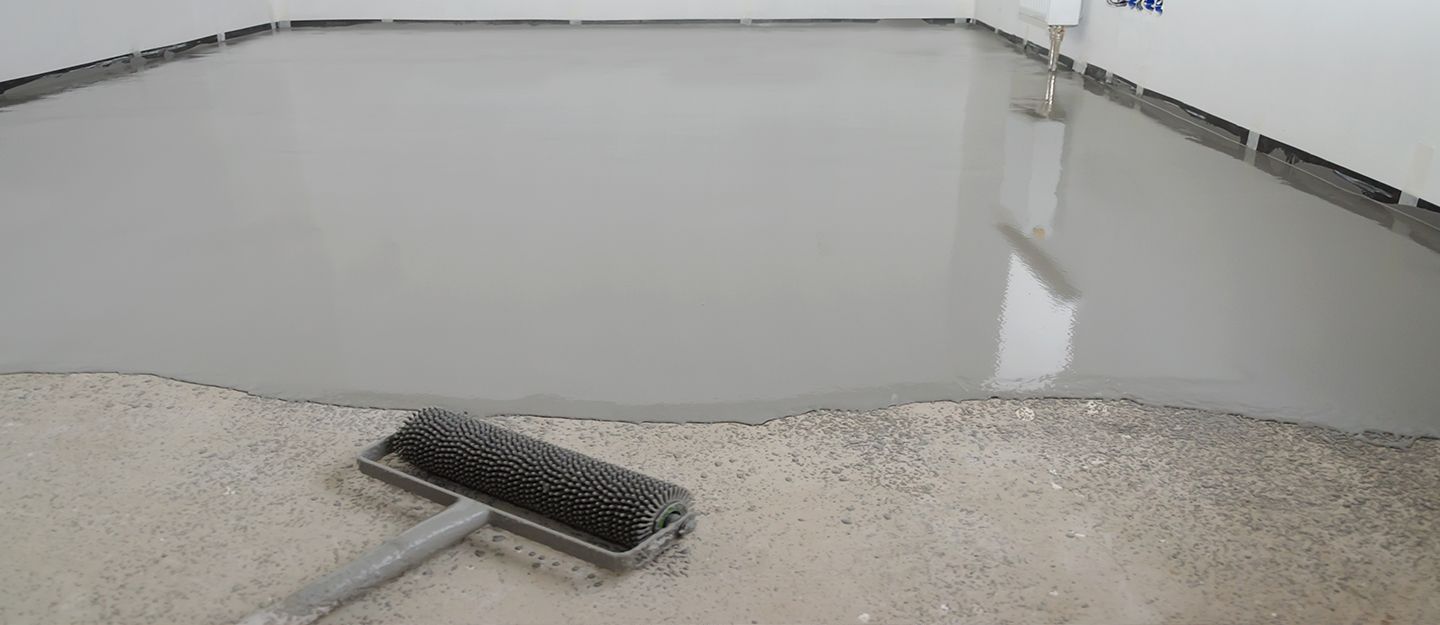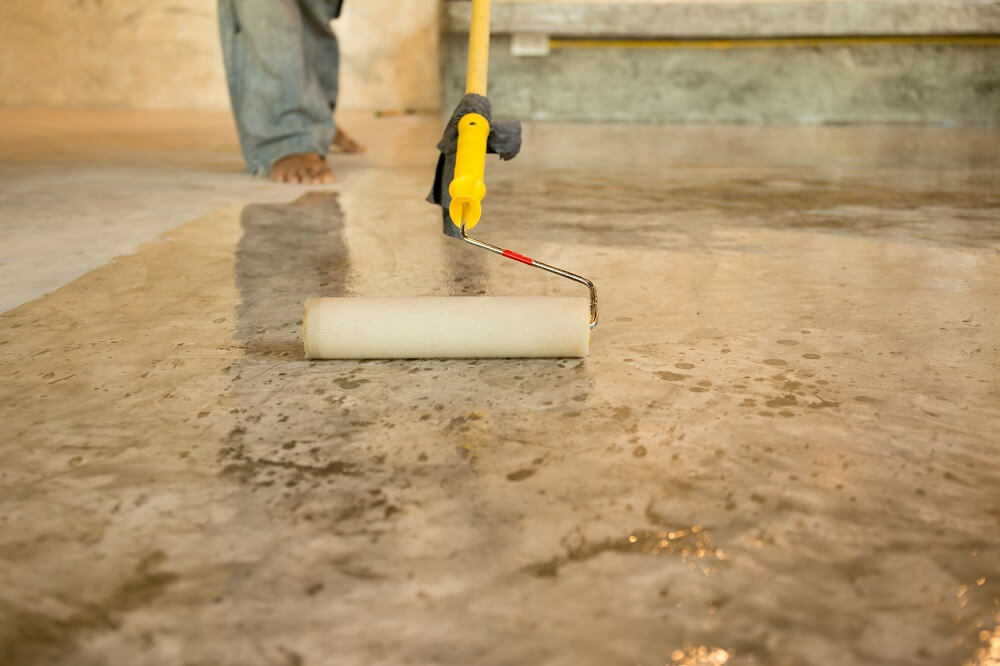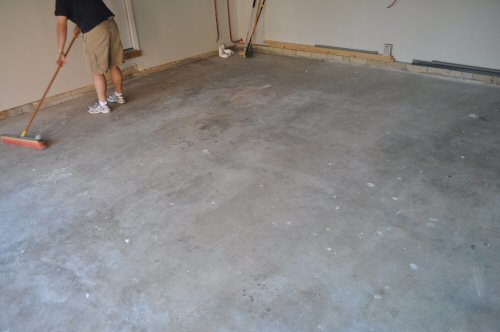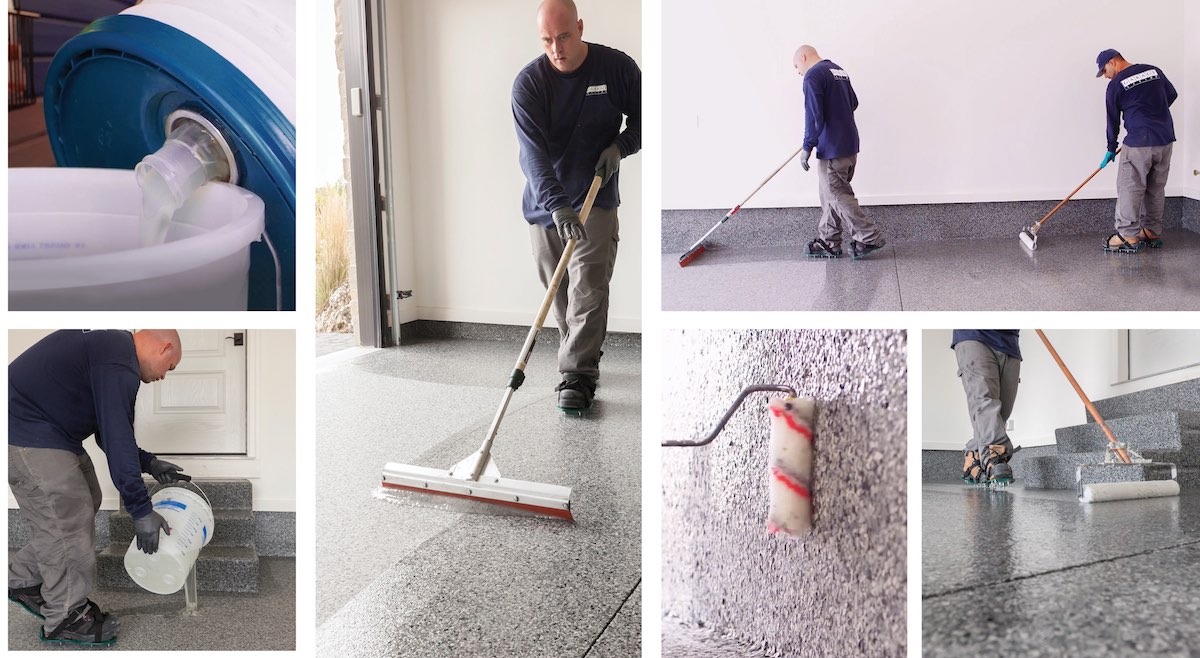Applying concrete floor paint is a practical and aesthetically pleasing way to enhance and protect your concrete surfaces. The first step in this process is thorough preparation of the concrete floor. Start by cleaning the floor to remove all dirt, grease, and debris. Use a broom or vacuum for dry debris, followed by a mop and a suitable degreaser for any oily spots. For stubborn stains, a power washer can be very effective. Once the floor is clean, inspect it for cracks, holes, or uneven areas. These should be repaired with a suitable concrete patching compound and allowed to cure completely. A smooth, clean surface is essential for the paint to adhere properly and achieve a professional finish.
Images about Applying Concrete Floor Paint
Applying Concrete Floor Paint

Next, etch the concrete to ensure the paint adheres well. Etching involves applying a mild acid solution, usually muriatic acid or a commercial concrete etcher, to open up the pores of the concrete. This step increases the roughness of the surface, providing a better grip for the paint. Follow the manufacturer’s instructions for the etching solution, which typically involves mixing it with water, applying it evenly over the floor with a brush or roller, and allowing it to react for a specified time. After etching, thoroughly rinse the floor with water to remove any residual acid and let it dry completely, which may take 24 to 48 hours depending on the climate and ventilation.
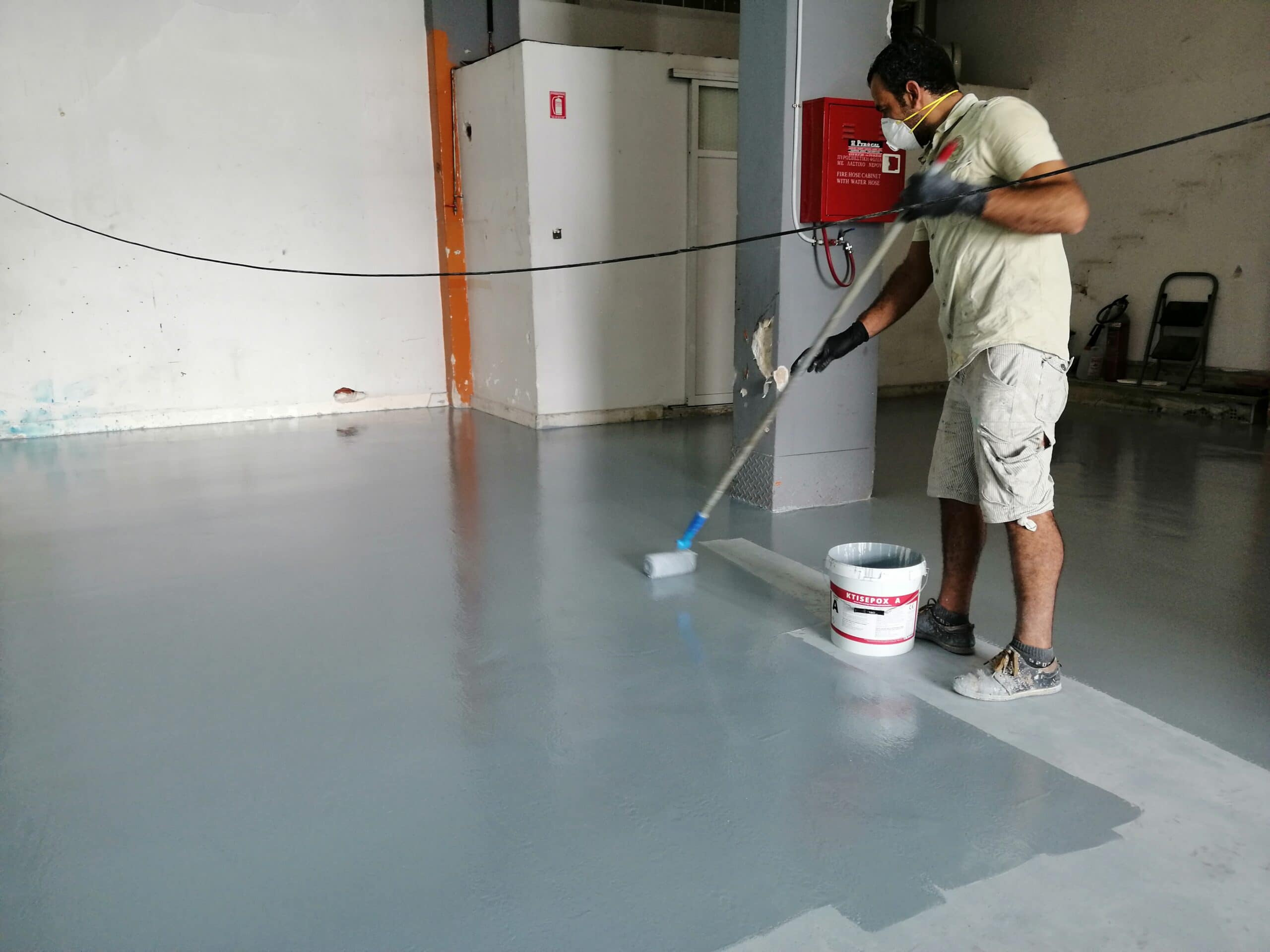
Choosing the right paint for your concrete floor is crucial for durability and appearance. Epoxy-based paints are a popular choice due to their strong adhesion, resistance to chemicals and abrasion, and long-lasting finish. Acrylic paints are another option, offering easier application and a quicker drying time, though they may not be as durable as epoxy. Before painting, apply a concrete primer to improve adhesion and create a uniform base color. The primer should be rolled or brushed on in a thin, even coat and allowed to dry according to the manufacturer’s instructions, typically around 8 to 24 hours. A well-primed surface ensures that the topcoat will bond effectively and wear evenly.

Once the primer is dry, it’s time to apply the concrete floor paint. Stir the paint thoroughly to ensure an even consistency. Use a roller with an extension handle to apply the paint evenly over the surface, starting at the farthest corner from the exit and working your way towards it. This helps avoid stepping on the wet paint. For edges and corners, use a brush to achieve a clean finish. Apply the paint in thin, even coats to prevent pooling and uneven drying. Depending on the type of paint, you may need to apply multiple coats, allowing sufficient drying time between each. Most epoxy paints require at least two coats, while acrylic paints may need more. After the final coat, let the paint cure completely before moving furniture or vehicles back onto the floor, which may take several days. Proper curing ensures a durable, attractive finish that will protect your concrete floor for years to come.
Types of Concrete Floor Coatings And What You Should Know
How to Paint an Epoxy Concrete Floor Coating
How to Resurface a Garage Floor
Epoxy Floor Paint Application Services
How to Prepare & Apply Epoxy Floor Paint Rawlins Paints Blog
Reasons to Get Your Garage Floor Coating in the Winter
How to Paint Concrete Flooring
Related Posts:
- Acid Wash Concrete Floor Colors
- Concrete Floor Thickness For A Garage
- Concrete Floor For Bathroom
- Interior Concrete Floor Ideas
- Kitchen Stained Concrete Floors
- Concrete Floor Tile Thickness
- How To Stain Concrete Floors DIY
- DIY Concrete Floor Grinding
- Concrete Floor Damage
- Faux Stained Concrete Floors
Applying Concrete Floor Paint: A Comprehensive Guide
Concrete floor paint is an economical and efficient way to enhance the look of any concrete surface. Whether you’re refinishing a garage, a patio, or a commercial space, painting your concrete floor can add value and aesthetic appeal to your space. But before you start painting your concrete floor, there are several steps you need to take to ensure that the job is done right. This comprehensive guide will give you all the information you need to apply concrete floor paint in no time.
Preparing the Surface
The most important part of applying concrete floor paint is preparing the surface. Before you begin painting, make sure that the concrete is clean and free of dust, dirt, grease, and oil. In order to do this, you must use an appropriate cleaning agent or detergent and scrub the entire surface thoroughly. Once the surface has been scrubbed clean, rinse off any remaining residue with a garden hose or pressure washer. Then allow the surface to dry completely before proceeding with the painting process.
Applying Primer
Once the surface has been fully cleaned and dried, it’s time to apply primer. Primer helps ensure that the concrete floor paint adheres properly to the surface and also helps protect against staining and other damage. Depending on the type of paint you are using, you may need to use a special concrete primer or an acrylic primer. It is important to follow the manufacturer’s instructions when applying primer as it can affect how well the paint adheres to the surface.
Mixing Paint
Before you begin painting your concrete floor, you must mix your paint properly. This means that you should mix it according to instructions on the label or in accordance with your manufacturer’s recommendations. Different paints require different mixing methods so make sure that you read all directions carefully before mixing your paint.
Applying Paint
Once your paint has been mixed properly, it’s time to start painting! First, use a quality brush or roller to apply an even coat of paint to the entire surface of your concrete floor. Make sure that you pay extra attention when painting around corners and edges as these areas can be difficult to reach with a brush or roller. After applying an even coat of paint, allow it to dry completely before adding a second coat for best results.
Finishing Touches
After two coats of paint have been applied to your concrete floor and allowed adequate time to dry, it’s time for some finishing touches! If desired, you can add stencils or other decorative elements such as designs or patterns to enhance the look of your painted floor. You should also seal your painted concrete floor with a clear sealer in order to protect it from staining and other damage.
Q: What type of paint should I use for my concrete floor?
A: The type of paint that you choose for your concrete floor will depend on several factors such as the condition of the surface being painted and how much traffic it receives. For most residential applications, an acrylic-based epoxy paint is usually recommended as it provides excellent durability and can withstand heavy foot traffic. However, if you are painting a commercial space with heavy foot traffic, an alkyd-based epoxy may be required. Be sure to consult with a professional before deciding on which type of paint is best for your application.
Q: What tools do I need for painting my concrete floor?
A: In order to properly apply concrete floor paint, you will need several tools including a quality brush or roller, protective gloves, drop cloths, a stirrer for mixing your paint, and a quality sealer for protecting your painted surface after it has dried completely. Additionally, depending on what type of primer or cleaner you are using, you may need additional materials such as sponges or special cleaning agents or detergents for prepping the surface prior to painting.
